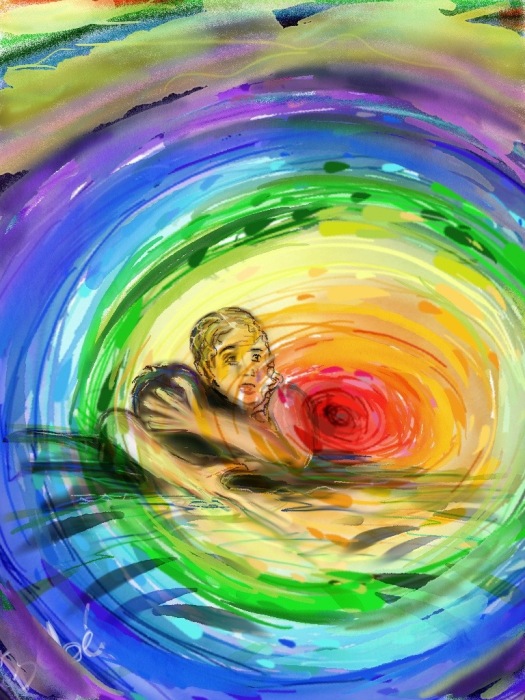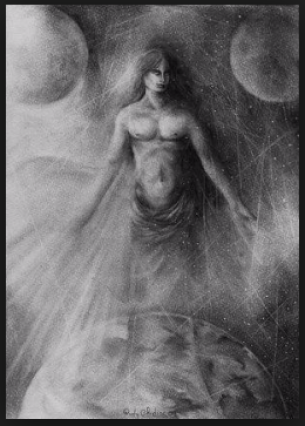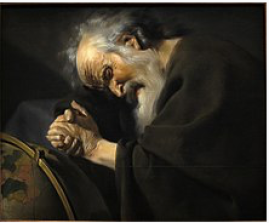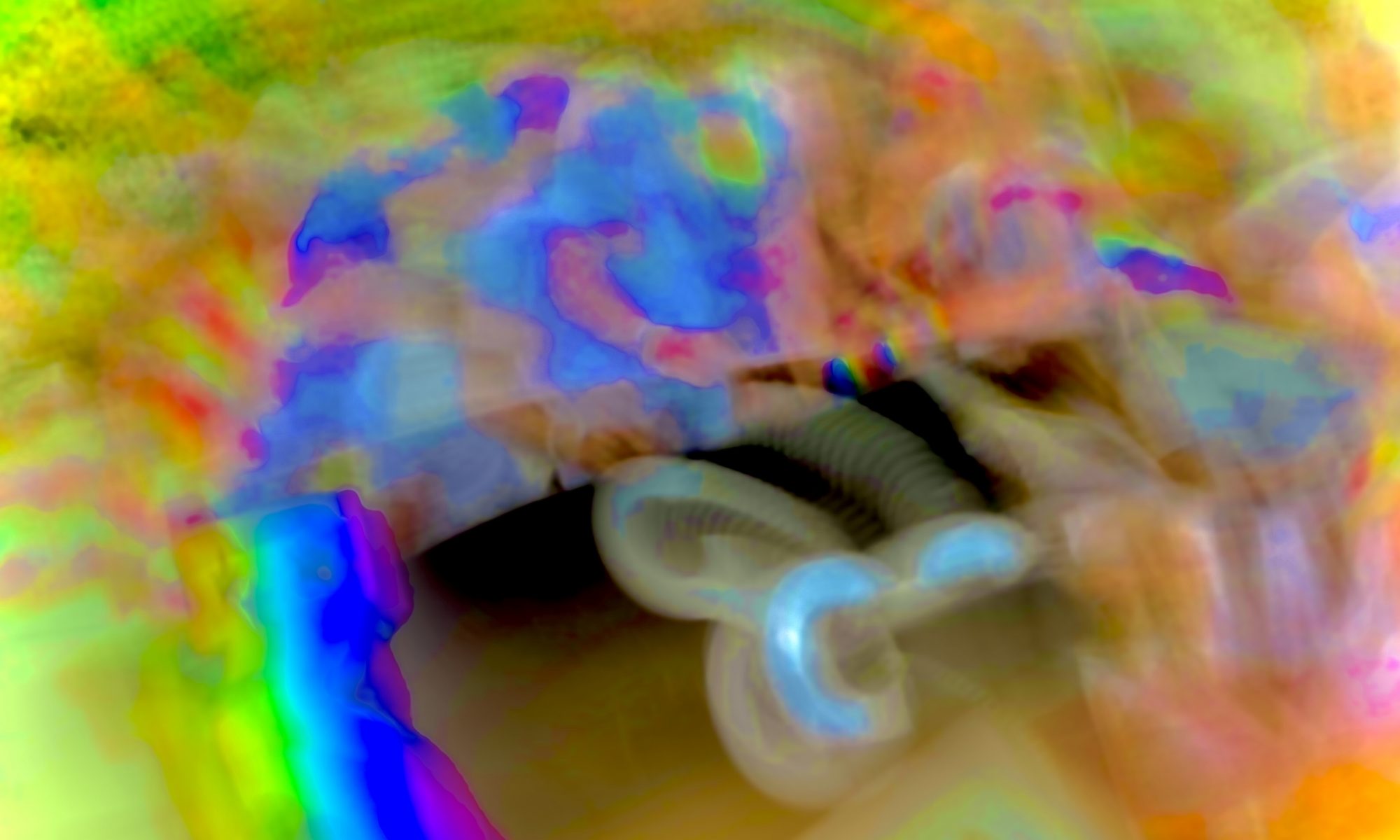Note: This is a reposting from a former post on my old site Sapience207 with an update of what happened next after first posting this piece.
I woke up this morning clinging to a fragment of a dream where I was sitting quietly listening to a lesson being given by someone I could not see, but who was saying, “The sea is within…within every human being.” I knew this to mean the Sea of Unconsciousness—the vast, uncharted water churning below the surface of normal consciousness filled with hidden feelings, thoughts, and ideas—things that have been buried or have never risen to the light of consciousness. To most normal men and women who go about their daily lives following expected norms and traditions, if such hidden content suddenly became conscious, it would seem strange, even alien. But, there is so much that lies hidden underneath the thin surface of reality that “normal” human consciousness uses to navigate life. Humanity after all has only been on Earth for but a brief moment of time when compared to Earth’s geologic history or to the cosmological origins of the universe. Compared to these measures, humans are but blips in time. But still, even in this blip of time, humans have come to dominate pretty much all life on our planet, even while grasping only a fragment of the whole of consciousness existing within each of us and all around us—like water.
Recently, it has felt to me as if I am a survivor of some great disaster on this sea, and I am surviving only by clinging to a little bit of wreckage scattered on the surface of this endless Sea of Unconsciousness.

This feeling is due to circumstances beyond my control and is probably the reason for the dream, which I interpret as an ongoing effort to understand and make sense of these extreme circumstances. Something else that resonated recently in my sense-making mission is the Coen Brothers’ movie A Serious Man (2009). Yes, I know I’m late in getting around to watching this movie, but sometimes I think we see things when we are supposed to see them and when we need them. And, so I needed it now, and I really related to poor Larry Gopnick who is the main character and a person who has been living by all the rules and beliefs he was taught to follow until he encounters a string of strange reversals and even spooky circumstances that flip his reality upside down. What befalls Larry is so disconcerting and destabilizing it threatens to undo everything he has ever worked to achieve. In addition, he is poorly equipped to deal with or understand his circumstances. So, he seeks help from the Rabbis at his synagog, but each encounter leaves him more bewildered and baffled than before.
For a good read and analysis on this movie, go to: This Ruthless World; specifically, to the March 23, 2012 post: What Does this Movie Mean? “A Serious Man” (2009). However, I would like to highlight several spectacular observations this blogger makes about this movie. Number one, she says the movie is a commentary on the idea that we are taughtto just accept things as they are in life and sail through it without looking for answers; however, this same attitude is what costs Larry his marriage, his family, and his home. She further points out that the viewer might first assume the moral of the story is: “If you don’t tend to that garden, someone else will;” however, the moral really goes much deeper, sinking down into the idea that “the ‘wisdom’ of unthinking, indifferent existence is absolutely wrong and spiritually destructive.” And, this is so important!
Carl Jung believes this is important too, which is probably why I am obsessed with his writings since previously I posted about the Archetype of Meaningand the Archetype of Life. However, Jung says much more about both archetypes, especially in relation to sense-making and meaning, including the following:
“It always seems to us as if meaning—compared with life—were the younger event, because we assume, with some justification, that we assign it of ourselves, and because we believe, equally rightly no doubt, that the great world can get along without being interpreted.
But how do we assign meaning? From what source, in the last analysis, do we derive meaning?
This is a fantastic question that is worthy of every human being’s time and attention; however, it can be difficult work, especially when one is forced to do it due to circumstances that decimate one’s prior beliefs and systems of thinking—like Larry. I use the word decimate deliberately for when we are growing up, we are taught certain beliefs and ways of thinking in accordance with our culture and society (or tribe). These things are supposed to help us make sense of the world and give us a vehicle by which to navigate life’s ups and downs. However, systems of thinking and beliefs are much more like diverse and different wild animals that have been tamed by culture and society to help people survive living together over time. Thus, if one’s conscious landscape is decimated due to a great calamity that kills off a large number of the wild animals (i.e., systems of thinking and beliefs), then it becomes necessary to regenerate the land (i.e., conscious ground), and then to find and tame new ways of thinking and beliefs in order to go forward again. Loneliness ensues, especially for a person who has been thrust unexpectedly into this process, because family, friends, and larger community who have not been crushed by the same circumstances often remain quite happy to go on living in the same systems of thinking and beliefs that defined one’s previously shared reality.
Jung answers his own question of where meaning is derived, and thus how it is gained, in the following way:
“The forms we use for assigning meaning are historical categories that reach back into the mists of time—a fact we do not take sufficiently into account. Interpretations make use of certain linguistic matrices that are themselves derived from primordial images.”
Lets stop for one second to consider the word primordial. Jung uses this word a lot as he advances his theories of consciousness and the unconsciousness. However, I suspect it may create some confusion, so here’s a basic definition of primordial:

- Existing at or from the beginning of time; primeval — “the primordial oceans”
- (especially of a state or quality) basic and fundamental — “the primordial needs of the masses”
- Biological:(of a cell, part, or tissue) in the earliest stage of development.are
To Jung, primordial means all of these things in relation to the origins of consciousness. He believes consciousness existed at the beginning of time and that it is a basic and fundamental state that all living beings are immersed. He also believes there are developmental stages of consciousness that can be traced back through time much like a human embryo transitions through key evolutionary stages before becoming a fetus that will become a human being. Thus, primordial images are structures in consciousness stretching back to the beginning of time. They form the blocking blocks of thoughts and our psychic nature. Thus, primordial images are crucial in helping a person make sense of their world and to find meaning and purpose, especially after a great calamity shatters one’s previous beliefs and ways of thinking.
Now, back to Jung who continues saying:
“Interpretations make use of certain linguistic matrices that are themselves derived from primordial images. From whatever side we approach this question, everywhere we find ourselves confronted with the history of language, with images and motifs that lead straight back to the primitive wonder-world.
Take, for instance, the word “idea.” It goes back to the concept of Plato, and the eternal ideas are primordial images [and thus] stored up (in a supracelestial place) as eternal, transcendent forms [Note: this sounds very much like where the ideas for gods and goddess emerged from the Sea of Unconsciousness]. The eye of the seer perceives them as “imagines et lares,” or as images in dreams and revelatory visions [like my dream].
Or let us take the concept of energy, which is an interpretation of physical events. In earlier times it was the secret fire of the alchemists, or phlogiston, or the heat-force inherent in matter, like the “primal warmth” of the Stoics [i.e., a member of the ancient philosophical school of Stoicism and a person who can endure pain or hardship without showing their feelings or complaining], or the Heraclitean (ever-living fire), which borders on the primitive notion of an all-pervading vital force, a power of growth and magic healing that is generally called mana.”
I think it is important to take another moment to consider just who the heck Heraclitus was; so, from Wikipedia:

Heraclitus of Ephesuswas a pre-SocraticGreek philosopher, and a native of the city of Ephesus,[2] then part of the Persian Empire. He was of distinguished parentage. Little is known about his early life and education, but he regarded himself as self-taught and a pioneer of wisdom. From the lonely life he led, and still more from the apparently riddled[3] and allegedly paradoxical[4] nature of his philosophy and his stress upon the heedless unconsciousness of humankind,[5] he was called “The Obscure” and the “Weeping Philosopher”.
Heraclitus was famous for his insistence on ever-present change as being the fundamental essence of the universe, as stated in the famous saying, “No man ever steps in the same river twice”[6] (see panta rheibelow). This is commonly considered to be one of the first digressions into the philosophical concept of becoming, and has been contrasted with Parmenides statement that “what-is is” as one of the first digressions into the philosophical concept of being. As such, Parmenides and Heraclitus are commonly considered to be two of the founders of ontology. Scholars have generally believed that either Parmenides was responding to Heraclitus, or Heraclitus to Parmenides, though opinion on who was responding to whom changed over the course of the 20th century.[7] Heraclitus’ position was complemented by his stark commitment to a unity of opposites in the world, stating that “the path up and down are one and the same”. Through these doctrines Heraclitus characterized all existing entities by pairs of contrary properties, whereby no entity may ever occupy a single state at a single time. This, along with his cryptic utterance that “all entities come to be in accordance with this Logos” (literally, “word”, “reason”, or “account”) has been the subject of numerous interpretations.
I like this guy! Now, back to Jung again:
“I will not go on needlessly giving examples. It is sufficient to know that there is not a single important idea of view that does not possess historical antecedents. Ultimately, they are all founded on primordial archetypal forms whose concreteness dates from a time when consciousness did not think, but only perceived. “Thoughts” were objects of inner perception, not thought at all, but sensed as external phenomena—seen or heard, so to speak. Thought was essentially revelation, not invented but forced upon us or bringing conviction through its immediacy and actuality. Thinking of this kind precede the primitive ego-consciousness, and the latter is more its object than its subject. But we ourselves have not yet climbed the last peak of consciousness, so we also have a pre-existent thinking, of which we are not aware so long as we are supported by traditional symbols—or, to put it in the language of dreams, so long as the father or the king is not dead.”
I want to draw your attention to Jung’s idea that primitive humans experienced thought very differently than modern humans experience it. He says thought for primitive humans came as visions, disembodied voices, dreams, and probably even disembodied ghosts and phantoms—stuff from our own consciousness, but humans had not yet developed the powers to perceive and grasp that these things were coming from within. This must have been a time in human development when the world was spectacularly magical as well as unimaginably terrifying for demons are just as likely to pop out from the unconscious as well as fairies or benevolent helpers. No wonder our ancestors developed elaborate myths, rituals, and traditions designed to tame such occurrences and give them cohesion, structure, and function so they could understand and maybe control them, and perhaps, most importantly, so certain psychic states do not inadvertently tear to shreds the fragile shared reality that was being created by early human tribes—and thus the vital role of medicine man, medicine woman, shaman emerged—people who could travel into these obscure and shady realms of consciousness and return with wisdom.

Jung goes on to give a lively account of how unconscious thought can pave the way for conscious solutions by recounting a dream a young theological student had and his analysis of the dream (pages 33 to 37). I will not go into this dream, only noting it involves the dreamer, a handsome old man dressed entirely in black known who is known as the black magician, a magician dressed entirely in white (you guessed it… the white magician), and an extraordinary event that occurs in a country ruled by an old king who is near his death. In Jung’s analysis, it is important to know the two magicians are two aspects of the Wise Old Man who is the superior master and teacher that is known as the Archetype of the Spirit symbolizing the pre-existent meaning hidden in the chaos of life. He tells us that theologian’s dream reveals the old men are trying to show the dreamer how good and evil function together, and presumably to help answer an unresolved moral conflict within the Christian psyche (p.36). Jung writes:
“Modern man, in experiencing this archetype, comes to know that the most ancient form of thinking is an autonomous activity whose object he is. Hermes Trismegistus or the Thoth of Hermetic literature, Orpheus, the Poimandres (shepherd of men) and his near relation the Poison of Hermes, are formulations of the sam experience. (p.37)” (Note: Hermes Trismegistus was credited with tens of thousands of highly esteemed writings, which were reputed to be of immense antiquity. Plato‘s Timaeus and Critias state that in the temple of Neithat Saisthere were secret halls containing historical records which had been kept for 9,000 years. — Wikipedia)
If the name ‘Lucifer’ were not prejudicial, it would be a very suitable one for this archetype. But, I have been content to call it the Archetype of the Wise Old Manor Meaning. Like all archetypes it has a positive and a negative aspect, though I don’t want to enter into this here. The reader will find a detailed exposition of the two-facedness of the wise old man in The Phenomenology of the Spirit in Fairytales.
The three archetypes so far discussed—the shadow, the anima, and the wise old man—are of a kind that can be directly experienced in personified form [that is we very easily project them onto other human beings or animals or things in nature]. In the foregoing I tried to indicate the general psychological conditions in which such an experience arises. But what I conveyed were only abstract generalizations. One could, or rather should, really give a description of the process the archetypes appear as active personalities in dreams and fantasies. But the process itself involved another class of archetypes that one could call the Archetypes of Transformation.”
Just like the post from This Ruthless World, Jung is advising us to pay attention to the stuff in the shadow and to sink into the place where wisdom whispers for to not do so is at one’s own conscious-spiritual peril. Thus, I think I’ve come full circle from where I started with my dream that said “the sea is within”—the sea I am floating on now as I try to find new conscious structures that might instill new meaning and purpose to what was shattered. But, will it be enough to survive what’s coming next? Just like poor Larry Gopnick in A Serious Man, which begins with him teaching his physics students about Schrodinger’s cat; it ends with this same puzzle—does Larry and his son live or die after the tornado? We don’t know, and we won’t know until we look inside the box. Or perhaps more appropriately, until the box is rebuilt through the process of sense-making and meaning so the journey can continue—thus the process is ever unfolding, so probably it is never done, which is another theme in the movie: bad things happen…that is life!

A poem by Ethan Coen reveals a key clue to the brothers’ story sensibilities. The tornado at the end of A Serious Man.
Postscript:
I originally posted this blog on my free WordPress site Sapience207 last fall. After posting it and sharing it to my Facebook page, I met Hannelie Sensemaker WorldPainter Venucia who saw this post and the thing I said about it being a piece of sense making in a chaotic time. She asked me to do an interview about my journey as a sense maker so far, and so I did, despite my journey being very heavy, sad, and challenging. Towards the end our interview, I get to hope—to the one thing that still makes sense in my world where every other frame of reference I had developed up until last year was shattered (i.e., the things I was taught about being a good person, a good worker, how the human world works). And, so I am attaching the audio of this interview and the video. Hannelie and I have continued to communicate and are seeing more of how our individual journeys to make sense of a chaotic world merge and blend. We have more creative endeavors planned both individually and together. This website is one, and Hannelie is unveiling the JOY Planet website, which is part of the Embodied Wisdom and Adventure JOY Generation Portal. I believe both web spaces are creative pools where individuals can come and where new ideas might be inspired, grow, and take flight—not just by us, but also the many who are seeking and looking for how to make positive change in a world that seems bent on going in a direction that will not sustain life much longer or human dignity for all. We need everyone Now to tell our best stories possible about ourselves and each other and the world. I believe we can. And as we heal individually and grow, we heal and help Earth heal. Thank you for your time and attention. This is your most precious resource, so much more valuable than money or the physical adornments that are possible to buy with money for only using your time and attention can you come to know the fullness and beauty of your whole self.


